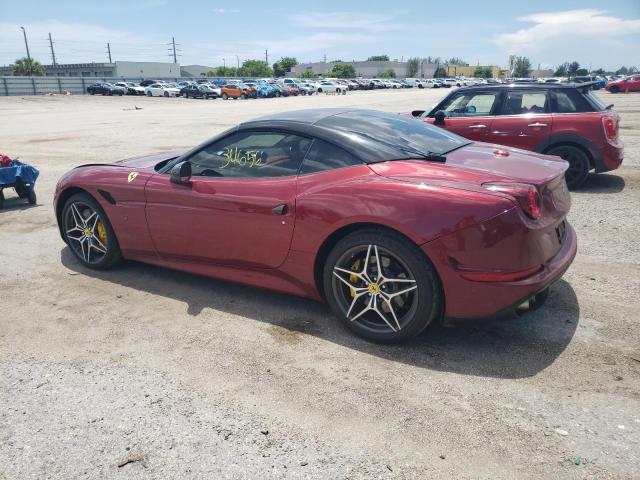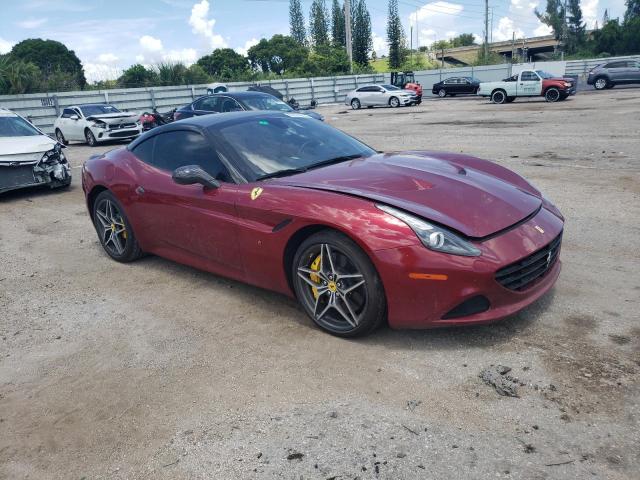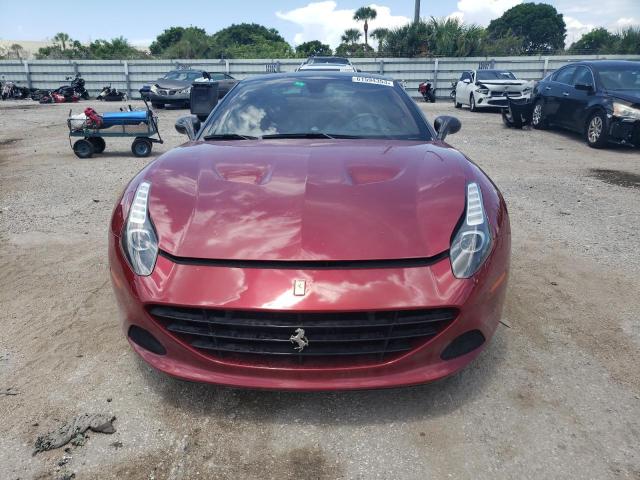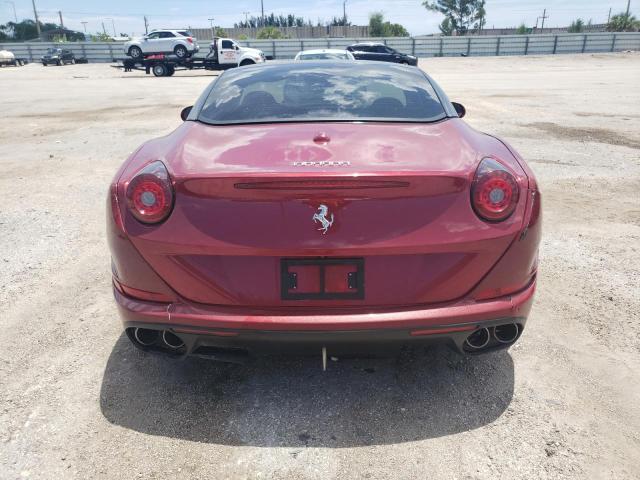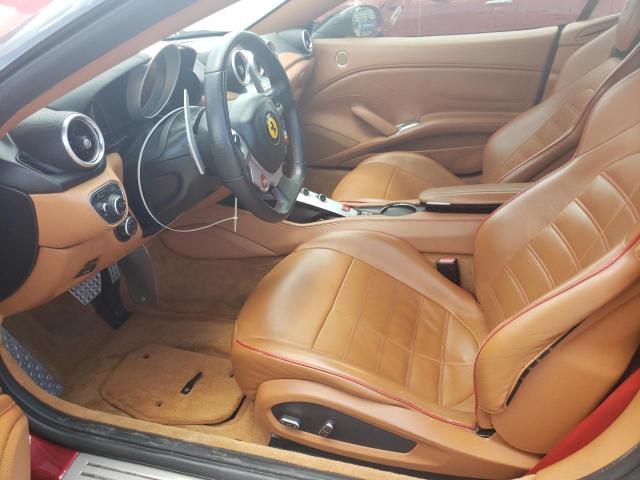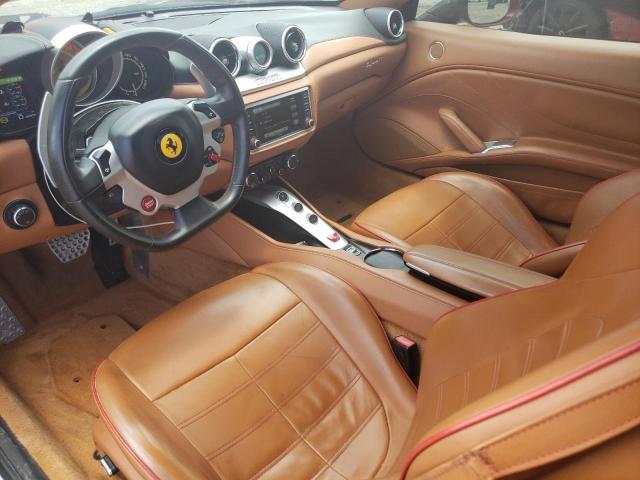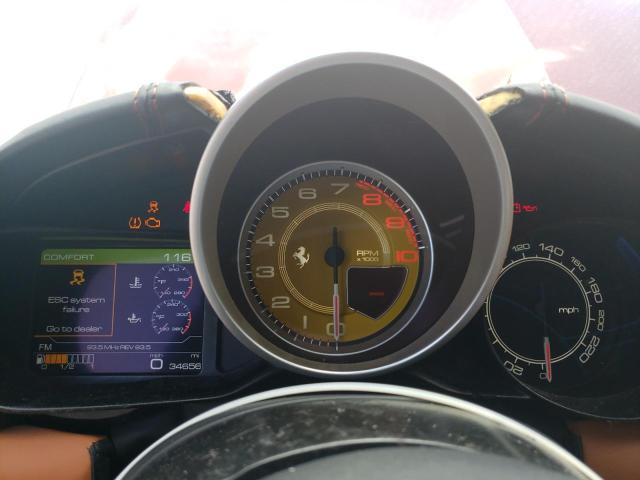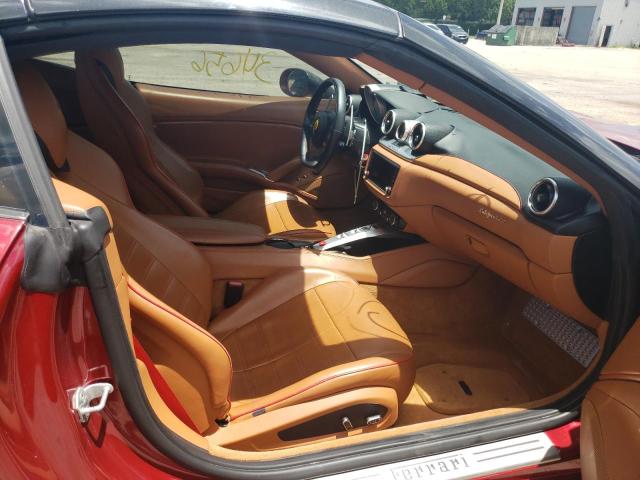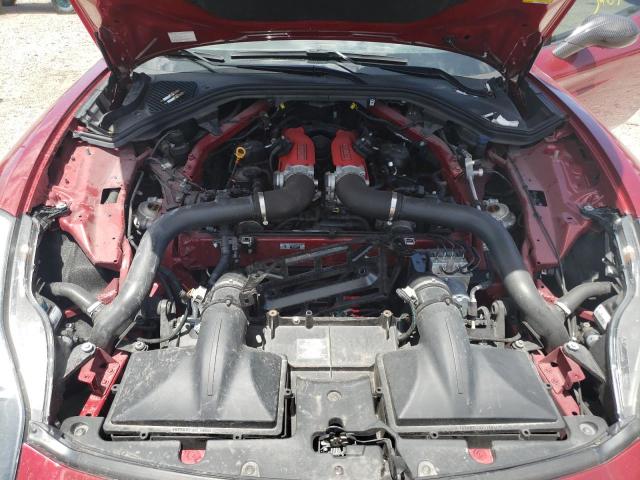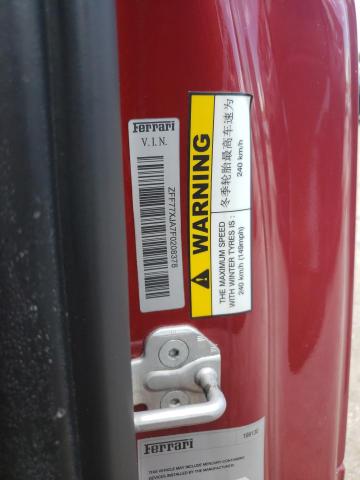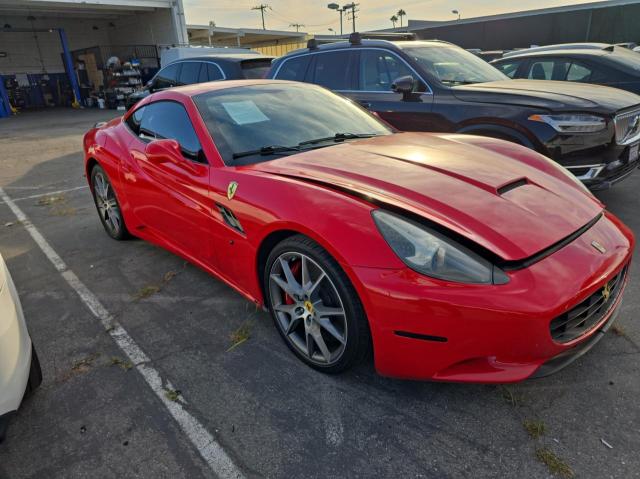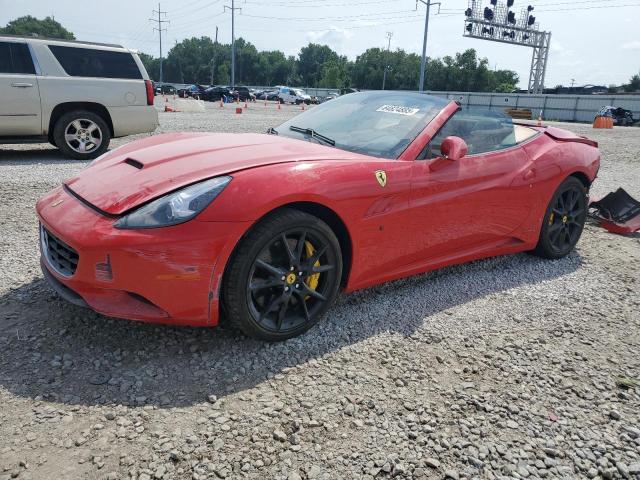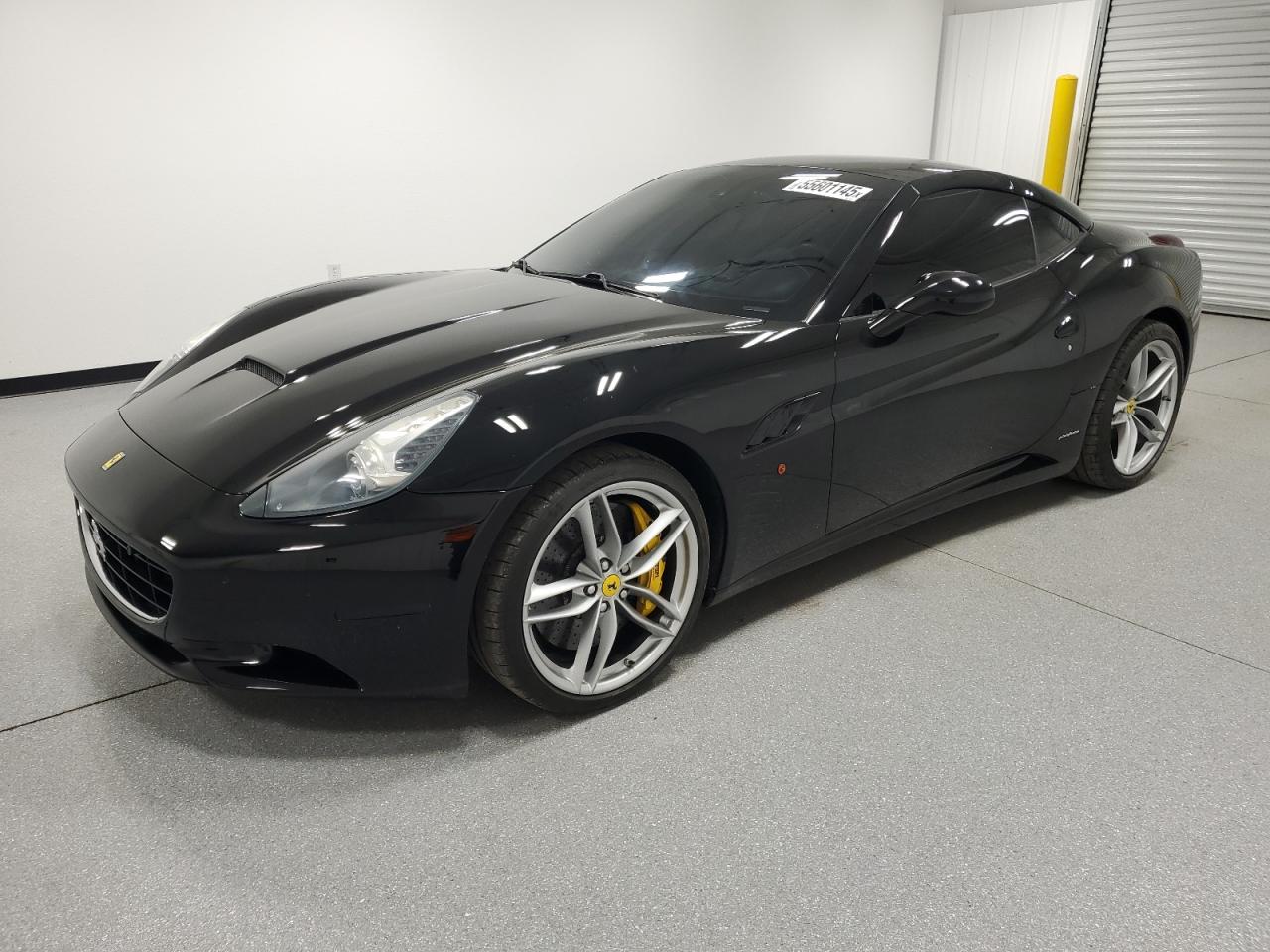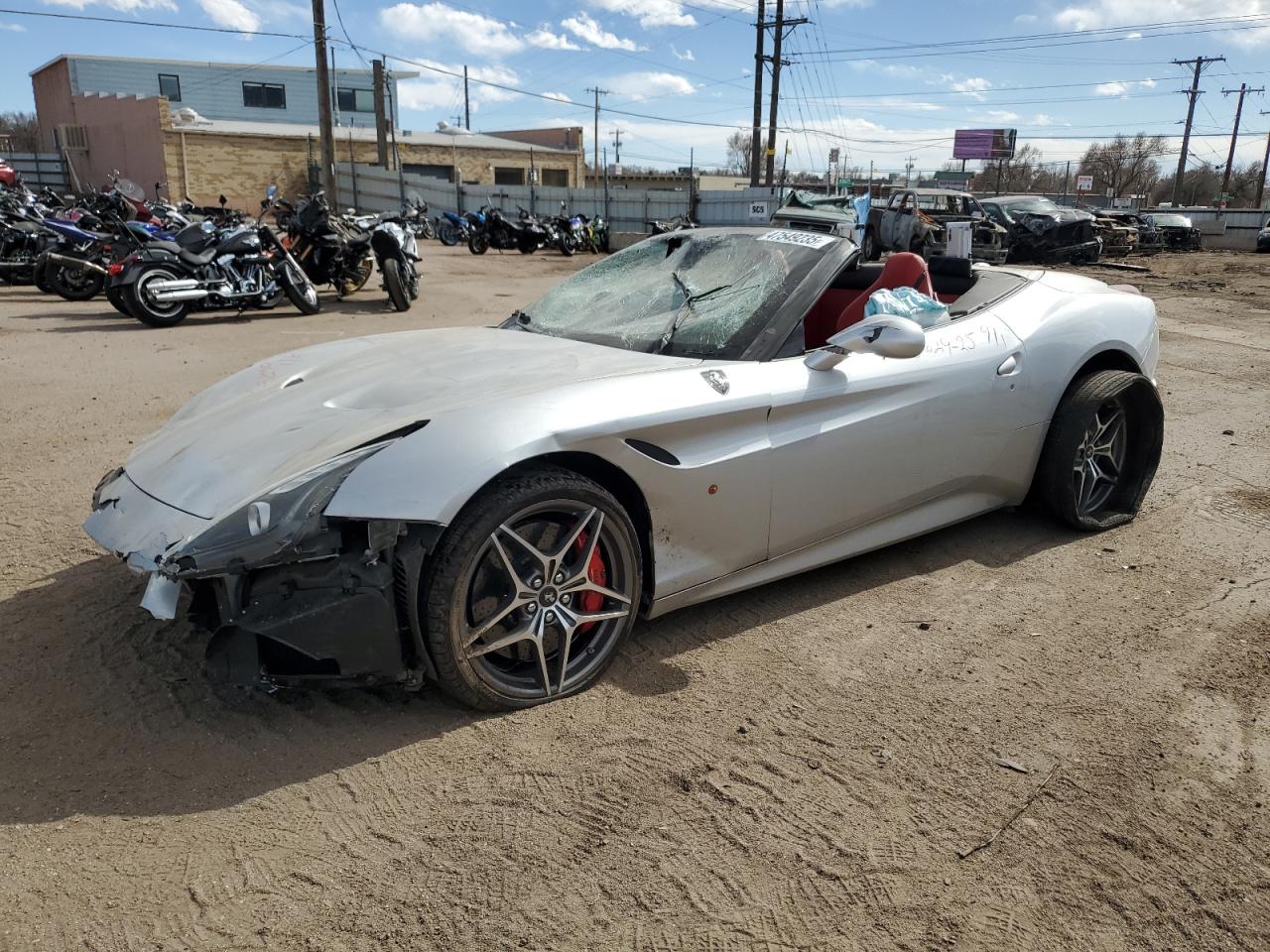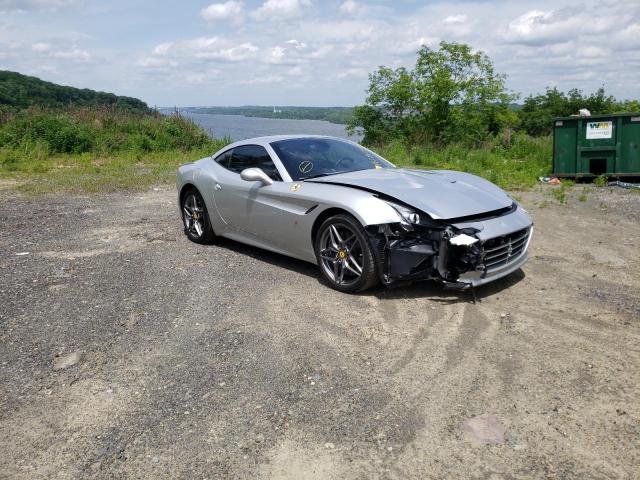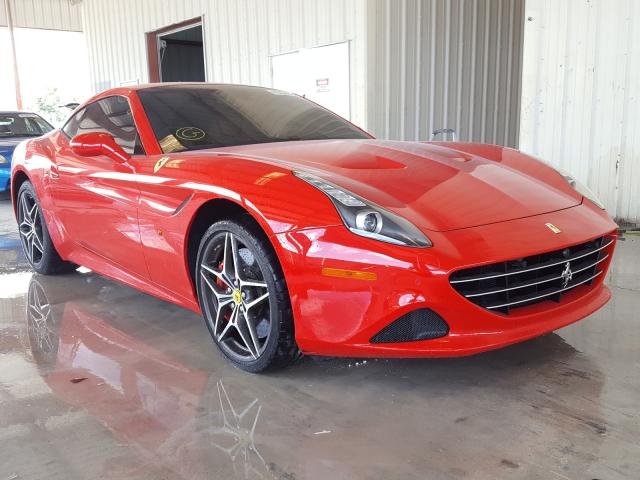2015 FERRARI CALIFORNIA T | ZFF77XJA7F0208378
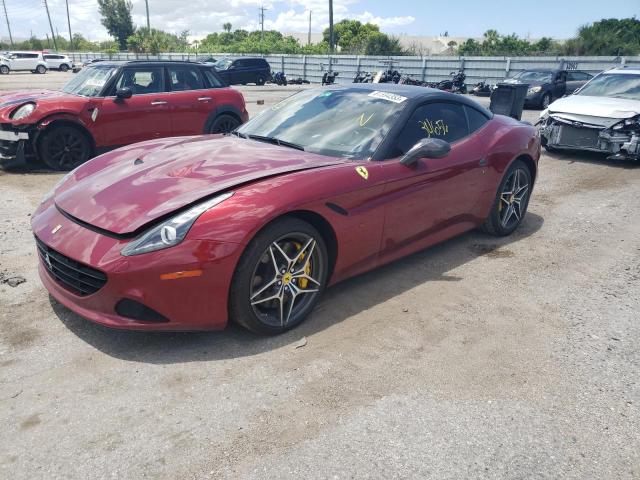 ❯
❯Lot details
- Sale Date2023-09-18
- Lot Number61594353
- ACV127229 $
- Sale documentFL -
- LocationFL - MIAMI CENTRAL
- Odometer34,656 miles (55,773 km)
- Primary DamageWATER/FLOOD
Vehicle details
- Make
- Model
- Year2015
- FuelGAS
- Engine3.9L 8
- TransmissionsAUTOMATIC
- Drive TypeRear-wheel drive
Vehicle specifications
1
~$210,000
Engine: 3.9L twin-turbocharged V8
Torque: 755 Nm
0–100 km/h: ~3.6 s
The Ferrari California T marked a turning point for Ferrari’s road cars — introducing turbocharging back into the lineup for the first time since the legendary F40. With 560 hp and 755 Nm of torque available through overboost in 7th gear, the California T offered serious performance: 0–100 km/h in 3.6 seconds, while maintaining everyday usability and comfort.
Unlike its naturally aspirated predecessor, the T's twin-scroll turbo V8 delivered massive torque at low revs while retaining Ferrari’s high-revving character thanks to a flat-plane crank and Variable Boost Management — an ECU strategy that gradually releases torque through the gears for improved traction and throttle feel.
Its dual-purpose character was further supported by a retractable hardtop, luxurious interior, and improved adaptive suspension. Yet, with carbon-ceramic brakes, revised geometry in the Handling Speciale version, and F1-Trac derived electronics, it retained agility and responsiveness deserving of the prancing horse badge.
Styling updates sharpened the lines, added aero efficiency, and brought the California in line with the F12 and 488 design language — while remaining more elegant than aggressive.
As a performance GT, the California T may have been Ferrari’s most versatile model of its time, but its combination of turbocharged V8 power, convertible practicality, and true grand touring capability ensures it a rightful place in the performance registry — especially as a precursor to models like the Portofino and Roma.
Final Bid Ferrari California (2015)
$35,250
$54,733
$75,500
Body Styles
A 2-door grand touring convertible with a power-folding hardtop, combining the comfort and styling of a coupe with the open-air freedom of a roadster. The aluminum roof folds in just 14 seconds. While maintaining the 2+2 seating layout, the California T sharpened the silhouette with sculpted side vents and a cleaner rear deck. The Handling Speciale (HS) package introduced more aggressive bumpers, a matte grey grille, and a sport-tuned exhaust, visually distinguishing it from the standard version.
Model Name Meaning (Manufacturer)
“California T” blends heritage and innovation: “California” honors the legacy of Ferrari’s 250 GT California, while “T” signals the major mechanical shift to turbocharging. The California T was the first turbocharged Ferrari road car since the iconic F40, and it redefined Ferrari’s “entry-level” GT offering by increasing power, refinement, and daily drivability — while retaining the romantic open-top experience Ferrari California owners valued.
Model Name Meaning (Languages)
Globally, the "California" name continued to evoke sun-drenched, open-road prestige, especially in key lifestyle-oriented markets like the U.S., Middle East, and parts of Asia. The addition of “T” was widely recognized as a signal of modern performance and efficiency, giving the nameplate renewed attention from both returning and first-time Ferrari buyers.
Body & Interior Colors and Rims
The California T came in an elegant and expressive range of Ferrari hues. Popular finishes included Rosso Corsa, Blu Tour de France, Nero Daytona, and Grigio Silverstone, while newer colors like Rosso California, Blu Pozzi, and Argento Nurburgring highlighted its GT character. The HS package introduced exclusive matte Grigio Ferro grille inserts and satin-finished rear diffusers for a sportier aesthetic. Atelier and Tailor Made clients opted for two-tone roof schemes, triple-layer paints, and unique historic finishes like Rosso Mugello or Avorio.
Interiors featured luxury-grade leather upholstery in classic Ferrari tones like Cuoio, Sabbia, Nero, and Rosso. Optional features included contrasting stitching, carbon fiber trim, and Alcantara seat inserts. The HS package included special contrast stitching, metallic badges, and a plaque on the center console denoting the upgraded chassis and exhaust calibration. The infotainment system featured a 6.5” touchscreen with navigation and media connectivity, while heated, ventilated, and memory-equipped electric seats enhanced long-distance usability.
Wheels included 19-inch diamond-cut alloys as standard, with optional 20-inch forged wheels in silver, matte grey, or gloss black. The Handling Speciale variant featured model-specific grey-painted wheels and an uprated suspension setup. Carbon-ceramic brakes were standard across all variants, with colored calipers available in red, yellow, black, silver, or custom hues. The dual-exit exhaust system gained a new note and crackle tune with the HS update.
Top Expensive Options
- Handling Speciale Package (stiffer suspension, quicker shifts, tuned exhaust): ~$8,000
- Full Carbon Fiber Interior Pack (Dash, Console, Air Vents): ~$10,000
- 20" Forged Diamond Wheels: ~$6,500
- Magneride Dual-Mode Adaptive Suspension (non-HS): ~$4,800
- Carbon Fiber Steering Wheel with LED Shift Lights: ~$5,000
- Daytona Style Leather Seats (Electric & Memory): ~$4,500
- Tailor Made Dual-Tone Paint Finish: ~$7,500–$15,000
- Rearview Camera + Front/Rear Parking Sensors: ~$2,800
- Premium JBL Professional Audio System: ~$4,200
- Scuderia Fender Shields & Colored Calipers: ~$1,500
vs Competitors
The Ferrari California T, produced from 2015 to 2018, marked a significant evolution for Ferrari’s entry-level grand tourer. It introduced turbocharging to Ferrari road cars for the first time since the iconic F40, using a 3.9-liter twin-turbo V8 that produced 560 horsepower — blending everyday usability with real supercar performance. As a hardtop convertible with a front-mid engine layout and 2+2 seating, the California T had a unique identity and competed with a diverse group of luxury sports cars and grand tourers, including the Aston Martin V8 Vantage Roadster, Porsche 911 Turbo Cabriolet, Mercedes-AMG SL63, Jaguar F-Type R Convertible, and Bentley Continental GT Convertible.
Against the Aston Martin V8 Vantage Roadster, the California T delivered significantly more performance, faster acceleration, and better technology, while still offering the elegant grand touring charm that Aston Martin is known for. The Aston's naturally aspirated V8 had a distinct tone, but the Ferrari’s turbocharged engine delivered instant torque and sharper dynamics, with more refined suspension and steering response.
Compared to the Porsche 911 Turbo Cabriolet, the California T felt more exotic and theatrical, though the Porsche was arguably more practical, quicker in real-world conditions (thanks to AWD), and packed with more tech. The 911 was easier to drive fast with confidence, but the Ferrari offered a richer sensory experience, with sharper styling, a louder exhaust, and more engaging steering.
The Mercedes-AMG SL63 brought effortless V8 muscle and high-end luxury, but lacked the California T’s nimbleness and precision. The Mercedes was heavier and leaned more toward comfort than excitement. The Ferrari, by contrast, maintained sports car agility with GT comfort, offering a more emotional and engaging drive, especially when pushed hard.
When lined up with the Jaguar F-Type R Convertible, the Ferrari offered a more polished platform and superior performance envelope. The Jag was loud, charismatic, and fun, but lacked the finesse and high-revving sharpness of the Ferrari. While the F-Type delivered strong value, the California T’s fit-and-finish, handling balance, and prestige set it apart.
Compared to the Bentley Continental GT Convertible, the California T was lighter, quicker, and more focused on the driver. The Bentley offered greater interior luxury and ride isolation, but it was less agile and less engaging to drive. The Ferrari’s front-mid engine layout and rear-wheel-drive configuration gave it a more balanced, sportier feel, especially in tight corners or spirited driving.
Fun Fact
The California T was the first Ferrari road car to feature a variable-boost turbo system, which altered the torque curve per gear, eliminating traditional turbo lag and mimicking the responsiveness of a naturally aspirated engine. It also became the best-selling Ferrari of its time, thanks to its broad appeal as a usable, daily Ferrari — and it laid the groundwork for turbo V8s in later icons like the 488, GTC4Lusso T, and Roma.



